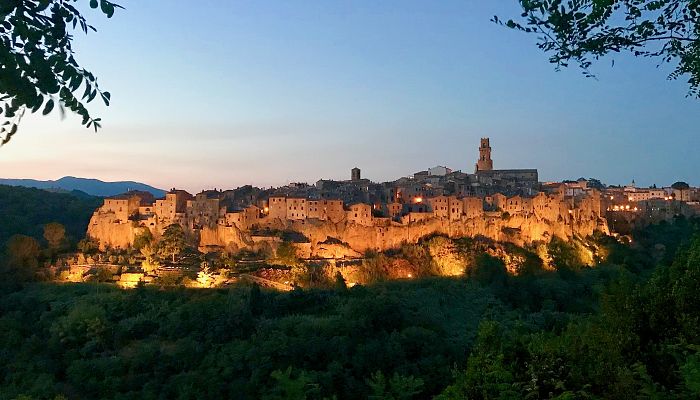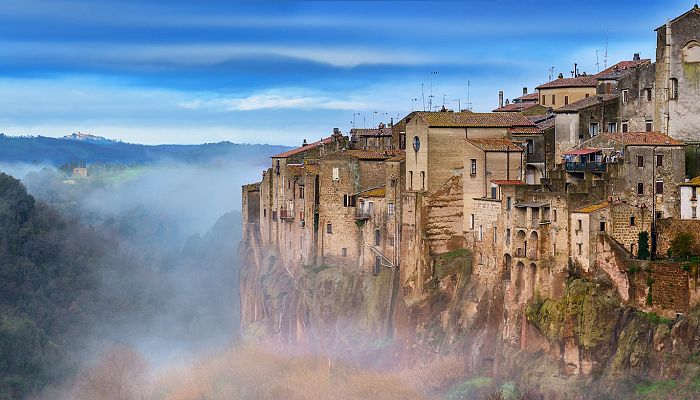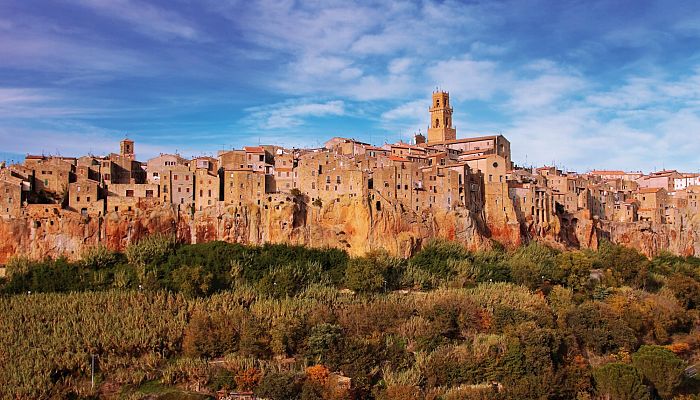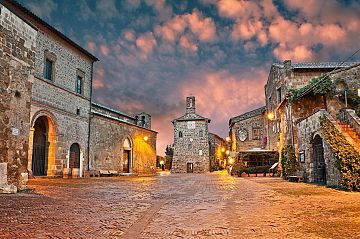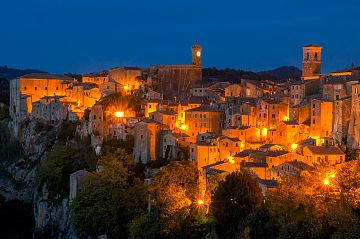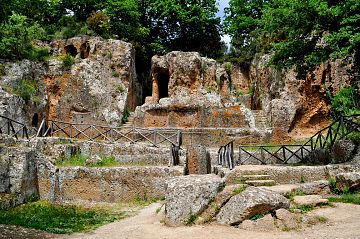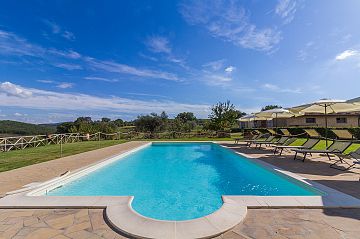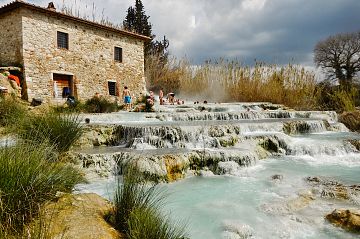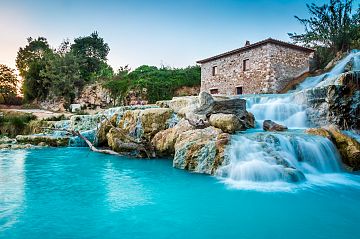Pitigliano ❤️ little Jerusalem
- Category What to visit in Maremma
Pitigliano, “little Jerusalem”
Number of views: 35462Agriturismo - Where to stay overnight
Cenni Storici su Pitigliano
After the papal bulls of 1555‑1569 introduced new restrictions on Jews in the Papal States, many families left Rome, Viterbo and Orvieto and found refuge in the Orsini county. Pitigliano—then a bustling stronghold perched on a tufa spur—proved welcoming: the newcomers quickly relaunched workshops, textile trading and lending activities, boosting the local economy.
Peaceful coexistence soon led to the construction of Jewish places of worship. In 1598 the first synagogue rose, still active today after several restorations. Around it developed the Jewish Ghetto, the heart of the “Little Jerusalem”: here stood the kosher butcher, the communal wine cellar, the rock‑hewn mikveh (ritual bath) and the unleavened‑bread oven, all recently restored to their original appearance.
Over the centuries the Jewish community integrated fully, opening thriving businesses in cloth, olive oil and wine. During the Nazi occupation (1943‑44) the town created an impressive solidarity network: many farmers hid Jewish families in cellars and farmhouses across the Lente valley. For this courage, on 18 March 2002 Yad Vashem in Jerusalem awarded several Pitigliano families the title of “Righteous Among the Nations”.
Cosa vedere nel magnifico paese di Pitigliano
Approaching from the south, Pitigliano rises like a nativity scene of carved tufa houses and towers. The first landmark is the Medici aqueduct (1636‑1639): fifteen arches—two monumental, thirteen smaller—once carried water from the Meleta springs to town cisterns.
Through the ancient gate in piazza Petruccioli you enter a maze of medieval lanes: stairways, flowered courtyards and balconies suspended above the ravine create unforgettable views. Skirting the aqueduct leftwards you reach the Orsini Fortress, originally Aldobrandeschi and rebuilt in the 16th century by Antonio da Sangallo the Younger; its drawbridge, keep and underground rooms now house a small but fascinating Museum of Arms and Instruments of Torture.
On the same square stands Palazzo Orsini, transformed in the 15th‑16th centuries into a refined Renaissance residence: inside are the Diocesan Museum (paintings and goldwork from the 13th to 18th centuries), the Archaeological Museum with Etruscan finds from the vie cave, and the Episcopal Archive. Don’t miss the inner courtyard with its hexagonal well and two‑tier loggia.
Since 25 April 2016 a panoramic walkway 400 m long connects via Santa Chiara to piazza della Repubblica, clinging halfway up the tufa cliff: it offers breathtaking views of the valleys and leads to the entrance of the restored Jewish Quarter, complete with multimedia panels on rituals and traditions.
At dusk the village comes alive with craft shops, wine bars and trattorias where you can taste the Sfratto—a pastry filled with honey, walnuts and orange zest symbolic of the Jewish community—and sip a glass of Bianco di Pitigliano DOC.
Articolo originale: Qui
Info: pitigliano.org

